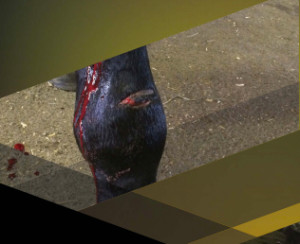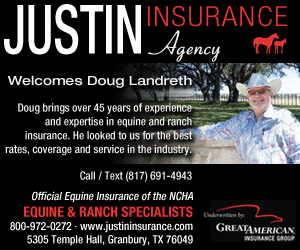Owners Share Motivation to Continue Despite Setbacks
Click here to read the complete article162 – May, 2016
BY LIZ ARNOLD
 Setbacks are an inevitable and unfortunate part of life. News of horses suffering mysterious illnesses, incurring freak injuries, or coming down with colic is common ringside chatter. How do owners deal with the setbacks that are common both in and out of the show ring? What keeps them motivated to ride on in the face of tragedy?
Setbacks are an inevitable and unfortunate part of life. News of horses suffering mysterious illnesses, incurring freak injuries, or coming down with colic is common ringside chatter. How do owners deal with the setbacks that are common both in and out of the show ring? What keeps them motivated to ride on in the face of tragedy?
It’s a common adage in the horse world, a sort of equine Murphy’s Law that says the better your horse, the more health issues it will have. Longtime owner, breeder, and exhibitor Sandy Reese of Lock Haven, Pennsylvania agrees that, for her, this adage has proven true. “I’ve been breeding for over thirty years. In my experience, the nicer your horses, the more problems you’re bound to have.”
The first of her odd cases came with Kramer, a son of Skys Blue Boy. “I’ve always bred and raised my own show horses. It’s kind of been my thing,” Reese says. “I love the process of raising them and seeing what they turn into.” Therefore, it was hard to take when the yearling colt developed neurological symptoms after falling in the pasture. “
With Kramer, it was difficult. Even as a baby he was such a phenomenal mover. He had that incredible Skys Blue Boy trot; we just knew he could be a great one,” she says. Initially, Reese and her husband Bob, a veterinarian, believed the colt was stunned from the fall. When he continued to have balance and coordination issues, they knew there was more to the story. A trip to Cornell University’s Equine Hospital revealed Wobbler’s Syndrome—a malformation of the cervical spinal cord—that results in the characteristic “wobbly” gait. “

I’m fortunate,” Reese says. “Bob and I have always been on the same page with caring for our horses. Bob and I feel a tremendous amount of responsibility for the horses. He always says, ‘we’re the reason they’re here.’ He’s right; it’s a commitment and I think you always have to give the horse a chance.”
The Reeses opted to have a relatively new surgery performed on the gelding, despite many vets’ opinions that the horse should be euthanized. “He went on to do wonderful things,” Reese says. “He may not have gone on to be the horse I’d envisioned, but he’s had a great life.” According to Reese, the surgery was successful, but Kramer was never comfortable moving in the level frame necessary for AQHA competition. Incredibly, he went on to a successful career on the USEF hunter circuit.
Reese likely hoped that her experience with unusual ailments would end with Kramer, but it was just the beginning. In the late ‘90s, Reese purchased a yearling from longtime friends Rick and Dolly Chayer. The mare, Pretty Much Perfect, aka “Rossi,” would go on to win multiple awards, including a Reserve Congress Championship in Two-Year-Old Hunter Under Saddle, three Hunter Under Saddle Superiors, and multiple year-end awards.
Click here to read the complete article162 – May, 2016










